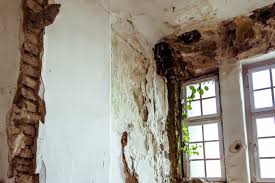 Everybody makes mistakes – that’s a lesson we all learn very early in life. It’s not supposed to be used as an excuse for negligence or being sloppy, and that’s why it’s so important to learn from our mistakes. That’s how we do better next time around.
Everybody makes mistakes – that’s a lesson we all learn very early in life. It’s not supposed to be used as an excuse for negligence or being sloppy, and that’s why it’s so important to learn from our mistakes. That’s how we do better next time around.
As with any profession, mistakes commonly occur in the world of mold prevention and removal. It’s just the nature of the business. There are many different variables to consider, and it so happens that less experienced or less skilled mold professionals might miss something important. It’s also possible for contractors to consciously cut corners, but this doesn’t really qualify as a mistake – it’s a conscious choice to compromise the quality of mold testing or mold remediation services.
But for this particular blog post, we’re not going to talk about gross negligence. Instead, we’re going to focus on mistakes that mold professionals often make because they are inexperienced, improperly trained, or because they lack the proper equipment. Here are a few common mistakes made by mold cleanup professionals.
1. Not following proper safety protocols
Some people – including some mold remediation contractors, believe it or not – aren’t fully aware of how dangerous acute exposure to mold can be. There are situations where even a detailed mold assessment will require full-body protection – but certainly, it’s important for professionals to always be protected during the actual cleanup phase of the operation. The health and safety hazards of mold are many, and should never be taken lightly.
2. Not testing to determine what strain of mold is causing the problem
There are a lot of different strains of mold out there, and not all of them behave the same way. It’s also true that different strains of mold have different levels of toxicity. The most reputable mold removal professionals will always take extra care to obtain accurate lab analyses of the mold discovered on site, in order to determine its toxicity and develop the optimal strategy for dealing with it. Less experienced mold professionals might try to skip this step, and go straight to cleanup operations. This is a mistake; knowing what strain of mold you have is important!
3. Failing to clean up the job sight thoroughly
When cleanup isn’t done correctly, all of that hard work could go to waste. That’s because mold spores are incredibly tricky and resilient. If mold infested materials are left at the job site, the spores can easily multiply and pick up where they left off. Nobody wants this.
Are there mold professionals who don’t make these mistakes?
Yes! Depending on where you live, there may be several mold remediation contractors in your area who have built solid reputations by delivering quality work. They often leave a trail of positive reviews from past clients – or if they’re just getting started, they give plenty of information about their experience, training, equipment and knowledge. Mold remediation is not something you want to leave in the hands of an amateur. Take the time to research your options and choose a contractor who goes about mold assessment and mold removal in the most methodical and professional way. Good luck!
